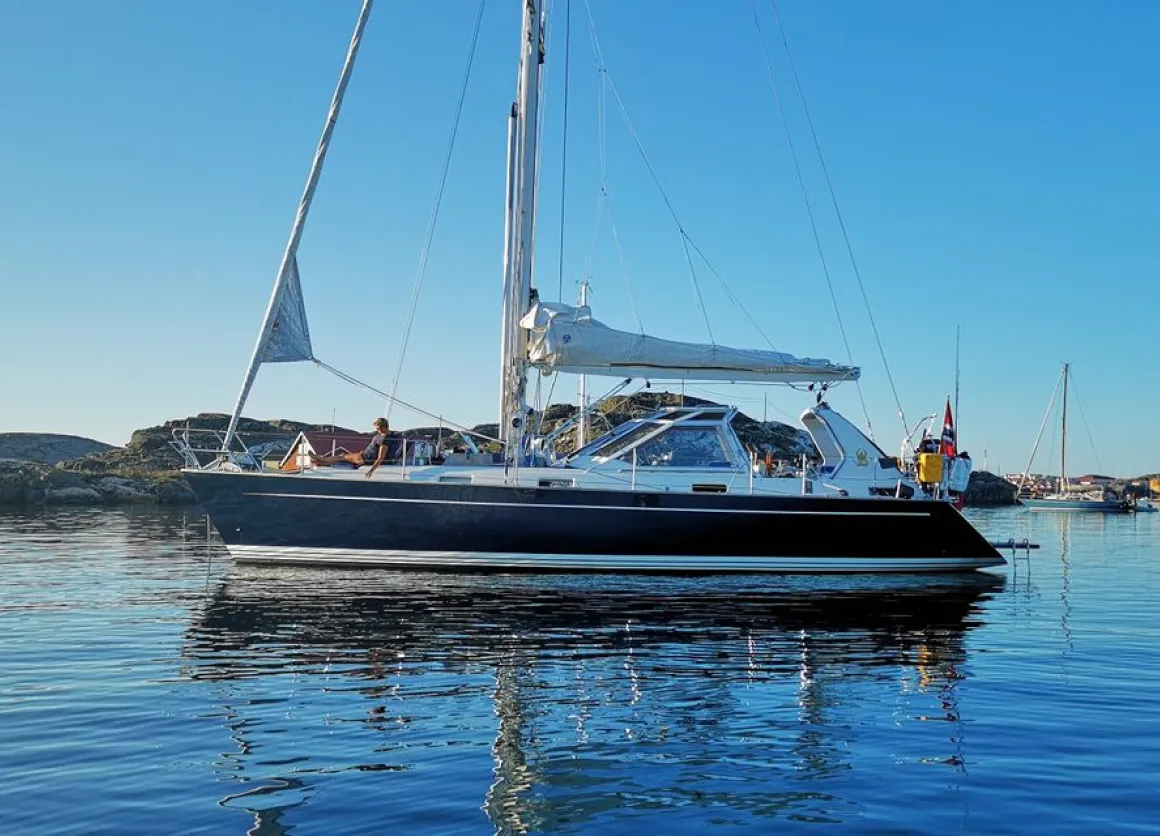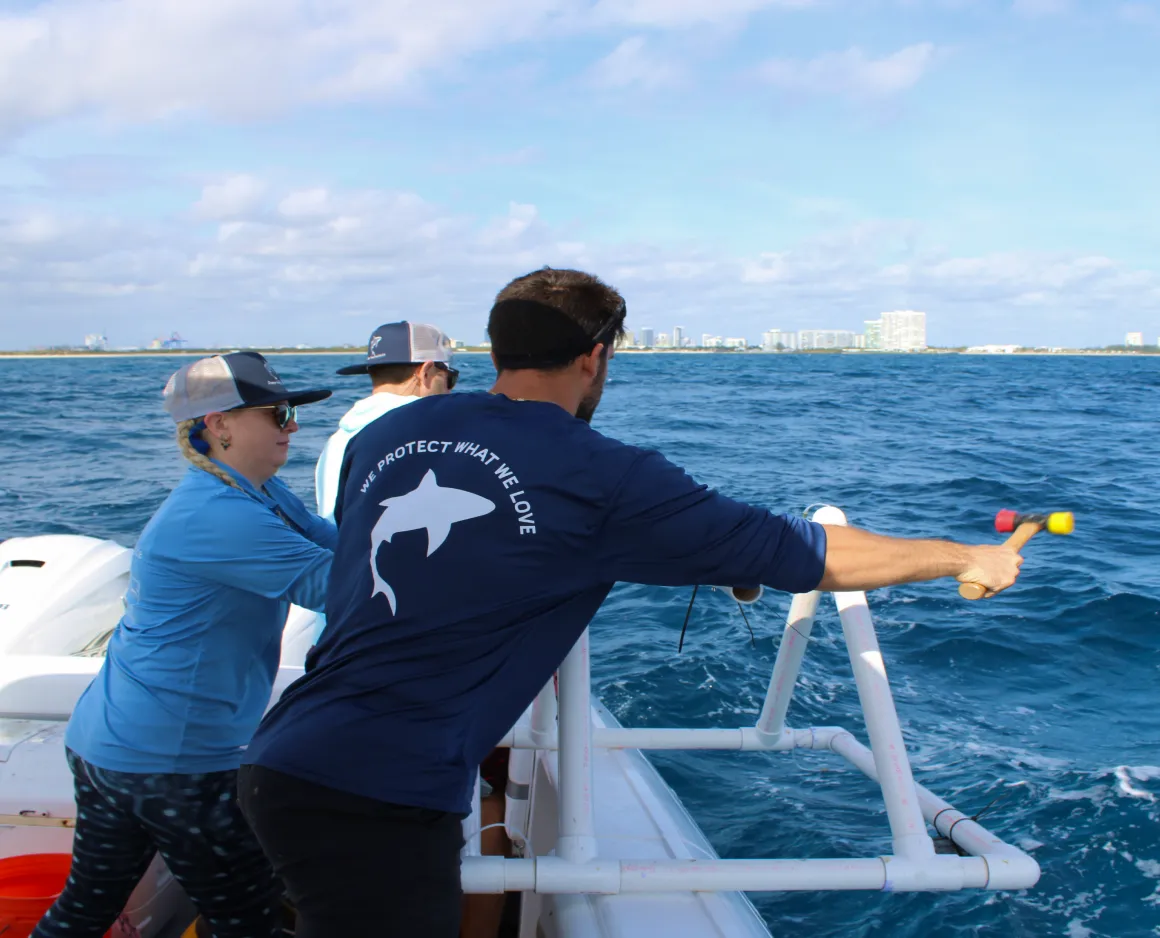The Green Marine Program
Everything you need to implement sustainable practices aboard your vessel

What Is the Green Marine Program?
The Green Marine Program empowers boaters and marine industry professionals to adopt sustainable practices on the water. Participants receive a Sustainability Kit and the updated 2025 Green Guide to Boating, featuring practical tips and eco-friendly alternatives.
The program includes:
- Sustainable vessel management practices
- Carbon offset opportunities
- Marine ecosystem protection
- Community engagement initiatives

Why Become Involved in the Green Marine Program?
The International SeaKeepers Society places a strong emphasis on sustainable practices to counter boating’s recognized environmental impact. This impact can be significantly reduced by adopting sustainable practices and green boating alternatives. Through behavioral shifts, vessel owners can wield substantial influence. The Green Marine Program allows vessel owners to not only reduce their own impact but to use their unique position to take the lead in promoting ocean conservation.
Educating our community about our role in the environment is pivotal, especially as global interest in leisure boating grows. Now is the moment to commit to tangible change and shape a more eco-conscious future.
The Sustainability Kit: Green Boating Alternatives
Your kit will contain items that make it easy to be ecologically strategic about the products you use on the water.
- Eco-friendly bags, straws, and containers that reduce disposable plastic marine debris
- Reef-friendly biodegradable sunscreen lotions, soaps, and boat washes that won't harm you or the environment
- Sustainable and reusable drinking water solutions
- Recipes for making best use of destructive invasive species
- A Green Guide to Boating, which outlines best practices for recreational boaters who are committed to ocean conservation
Download Your Free Guide to Green Boating
If you’re a boat owner, you’re in a unique position to lead by example and demonstrate sustainable boating practices. This free guide will show you how.
Fabien Cousteau
Ocean Conservationist and Filmmaker
How Can I Make a Difference?
DISCOVERY Program Results
250+
260+
500+
200+
85k+
6k+
15+
Frequently Asked Questions
What is climate change?
Climate change refers to the long-term change in local, regional, and global average weather patterns. Climate change includes global warming, which refers to Earth’s rising surface temperature and the impacts that are happening to our planet.
Observable impacts of climate change include rising ocean temperatures, melting polar ice, rising sea levels, ocean acidification, dramatic fluctuations in local weather patterns, and an increase in the frequency and intensity of natural disasters.
What is my "carbon footprint," and how can I calculate it?
Every day, human activities directly and indirectly result in the emission of carbon-based greenhouse gases. Your “carbon footprint” refers to the amount of these gases that are produced from your activities.
Greenhouse gases can be emitted through land clearance and the production and consumption of food, fuels, manufactured goods, materials, wood, roads, buildings, transportation, and other services. Carbon footprints are usually measured in equivalent tons of carbon dioxide (CO2).
Online carbon footprint calculators allow you to determine your impact based on your lifestyle, including your home, vehicle, travel, and diet. These calculators use known average emissions for each factor to determine how much carbon you are likely emitting during the course of a year.
Interested in knowing your carbon footprint? See Sustainable Travel International’s carbon footprint calculator.
What are carbon offsetting and carbon credits?
Carbon offsetting is the act of reducing carbon dioxide or other greenhouse gases to compensate for emissions that were produced elsewhere. Offsetting can be achieved by purchasing “carbon credits,” which fund certified climate action projects that reduce or remove greenhouse gases.
By using a carbon footprint calculator, an individual or company can estimate the amount of carbon their activities release into the atmosphere. They can then offset it through the purchase of carbon credits which fund carbon-reducing projects.
Many companies sell credits that fund various projects, so it is important to do your research when selecting a carbon offset provider.
How can I evaluate a carbon offset provider?
Offset providers act as aggregators and retailers between project developers and buyers. They provide a convenient way for consumers and businesses to access offset credits from a portfolio of projects.
It is often a good idea to work with someone who has a detailed understanding of the sectors or project types being considered, which in some cases could involve enlisting multiple experts. The goal is to utilize the services of consultants or trusted retailers to examine projects, navigate different options, and put together a portfolio of offset credits that meet the buyer’s goal (with respect to location, project type, offset quality, and co-benefits, for example).
When choosing a carbon offset provider, consider:
- Are their projects all third-party verified and validated? Are projects accredited by internationally recognized Program Standards, such as CDM, Gold Standard or VCS, Plan Vivo, etc.?
- What type of projects do they offer in their portfolio (e.g., wind farm, methane recovery, etc.)?
- Where are the carbon offset projects located?
- What portion of the carbon credit price is allocated to the project developers?
- Does the project reduce greenhouse gas emissions or remove carbon from the atmosphere or destroy the greenhouse gas?
- How do they ensure that the greenhouse gas reductions that the carbon offsets represent were quantified accurately?
- What steps have they taken to ensure that the carbon offsets that are selling are additional?
- How do they “retire” credits? Do they use a publicly accessible registry to track and retire your credits?
- Do their projects go beyond carbon offsetting? Every project has huge potential to provide community benefits and biodiversity protection. Find out which of their projects provide employment opportunities, healthcare benefits, education, and the protection of certain species. These impacts are often called co-benefits, and checking that the projects align with the UNs Sustainable Development Goals can be a good place to start.
- What is their experience in carbon offsetting? Many organizations are new to the field of carbon offsetting and may not have the technical expertise and established relationships when it comes to offsetting.
- Are they transparent? A reputable organization will have information about their projects, methodologies, and quality assurance protocols readily accessible on their website and be willing to answer your questions. If not, that is a good clue that they may be trying to hide something. Check that the methodologies used by the organization are clearly defined and any questions you have about your support are answered with clarity.
- If they are selling credits that will be created in the future (i.e., through forward crediting), what mechanisms (insurance or otherwise) are in place to ensure the offsets will actually be delivered?
- What percentage of the portfolio (by tons of CO2) is made up of offsets from tree planting or agricultural soils projects? If it is a significant percentage (more than 20% of your portfolio), how do they address permanence risks?
- What is the organization doing to educate consumers about climate change and the need for government policy to deal with it?
- Are they a member of any alliance that has a Code of Best Practice that members must adhere to?
What is The International SeaKeepers Society?
SeaKeepers is a global registered not-for-profit organization dedicated to ocean conservation. Our initiatives rely on the energy and generosity of people around the world who share our concern for the health of the oceans and, by extension, the survival of our planet.
Our core initiative is the DISCOVERY Program, which facilitates marine research and education through partnerships with the boating and academic communities. We coordinate scientific and educational expeditions through the generosity of vessel owners willing to contribute their time and expertise.
These privately owned DISCOVERY Fleet vessels provide access to the world’s oceans for research and education, eliminating the costs and wait times for scientists and teachers.
